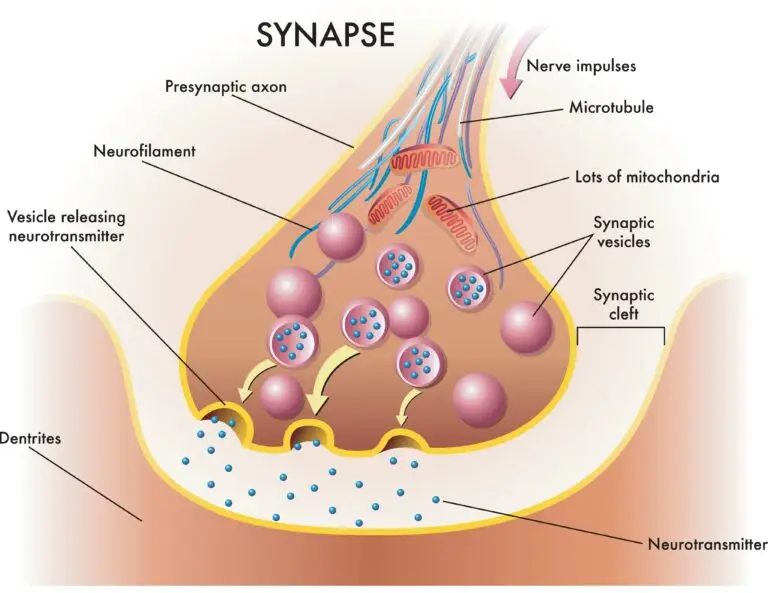Synapse

Table of Contents
What is a Synapse?
A synapse is a specialized junction or connection between two nerve cells (neurons) or between a neuron and an effector cell, such as a muscle or gland cell. It is where information is transmitted from one cell to another, allowing for communication within the nervous system. Transmission across synapses is a fundamental process in neural communication and plays a crucial role in various physiological functions.
Components of a Synapse
Presynaptic Terminal
The presynaptic terminal is the end of the presynaptic neuron’s axon (nerve fiber). It contains synaptic vesicles filled with neurotransmitters.
Synaptic Cleft
The synaptic cleft is a small gap separating the presynaptic terminal from the postsynaptic membrane. Neurotransmitters are released into this gap.
Postsynaptic Membrane
The postsynaptic membrane is the membrane of the target cell, which can be another neuron, a muscle cell, or a gland cell. It contains receptors that bind to neurotransmitters.
Neurotransmitters
Neurotransmitters are chemical messengers stored in synaptic vesicles within the presynaptic terminal. When an action potential reaches the presynaptic terminal, neurotransmitters are released into the synaptic cleft.
Process of Synaptic Transmission
- Action Potential: An action potential (electrical signal) travels down the presynaptic neuron’s axon.
- Neurotransmitter Release: The arrival of the action potential at the presynaptic terminal triggers the release of neurotransmitters from synaptic vesicles into the synaptic cleft.
- Neurotransmitter Binding: Neurotransmitters diffuse across the synaptic cleft and bind to receptors on the postsynaptic membrane.
- Postsynaptic Response: The binding of neurotransmitters to receptors initiates a response in the postsynaptic cell. This response can be excitatory (encouraging the generation of an action potential) or inhibitory (discouraging the generation of an action potential).
- Termination of Signal: Neurotransmitters bound to receptors are either taken back into the presynaptic neuron for recycling (reuptake), broken down by enzymes, or diffuse away from the synapse.
Types of Synapses
Chemical Synapses: The majority of synapses in the nervous system are chemical synapses, where neurotransmitters mediate the transmission of signals between neurons or from neurons to other cells.
Electrical Synapses: Electrical synapses involve direct electrical coupling between neurons through gap junctions. In this type of synapse, ions, and electrical signals can pass directly from one cell to another.
Related Links
Epithelial tissue
Immune System
Nervous System
Vesicle